10 Most Famous Paintings Made by Famous Artists of All Time
Throughout history, art has become a magical way for people to express emotions, cultural shifts, and historical moments. As time goes by, we cannot know how many works there have been, how many artists have created brilliant worlds through paintings. But maybe we all know the following masterpieces transcend time, becoming iconic symbols of human creativity and inspiration.
Let's explore with Skilltrans 10 of the most famous paintings ever created, delving into their significance, the artists behind them, and why they remain timeless treasures.
Mona Lisa - Leonardo da Vinci
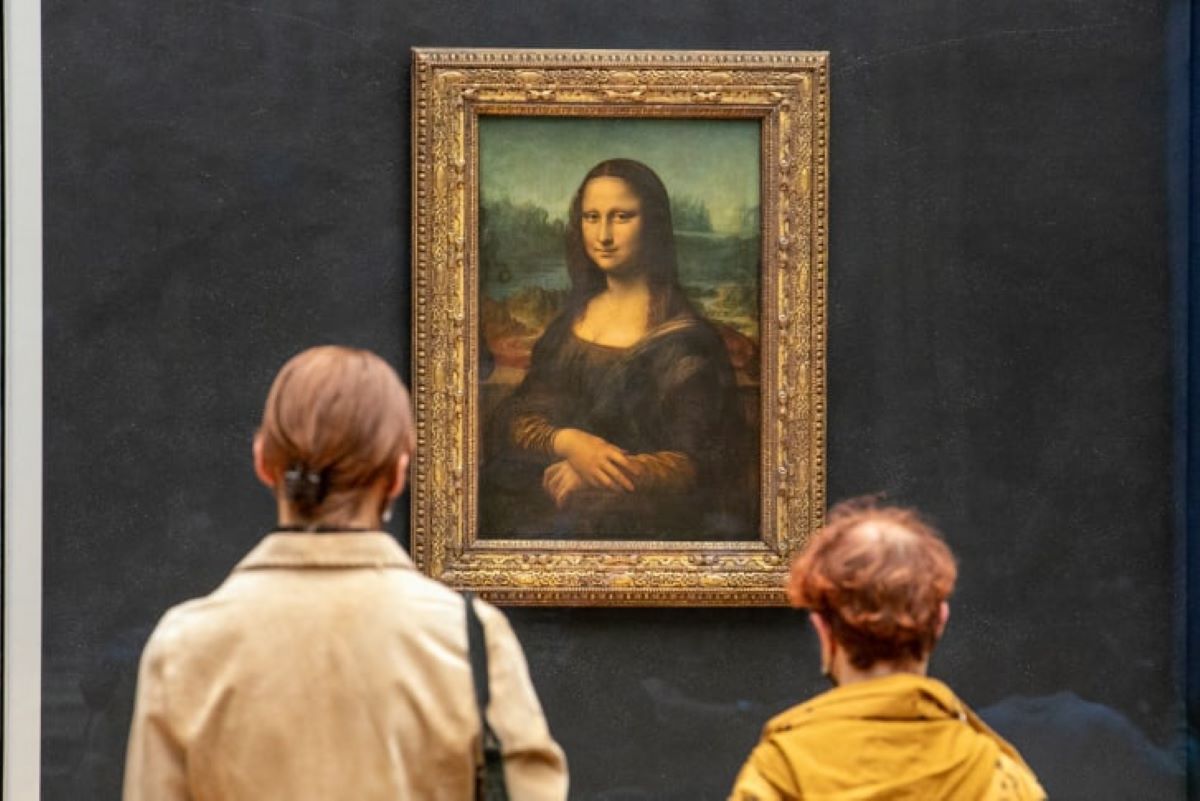
It’s no surprise that the world’s most famous painting is a painting of a mysterious woman with an unsolvable smile. To this day, there are still some uncertainties about this priceless work of art.
One of the painting’s most captivating features is the enigmatic smile of the subject. Depending on the viewer’s perspective and mood, her smile seems to shift from joyful to neutral or even melancholic. Another mesmerizing feature of the Mona Lisa is her gaze, which appears to follow viewers no matter where they stand.
The subject is believed to be Lisa Gherardini, the wife of a Florentine merchant named Francesco del Giocondo, but experts can’t say for sure. The painting is truly an innovation in art – it was the first Italian portrait to focus closely on the sitter (half-length, not full-length), according to the Louvre. The Mona Lisa was first displayed at the Louvre in 1804.
Before the 20th century, historians say the Mona Lisa was little known outside the art world. However, in 1911, a former employee of the Louvre Museum stole the painting and hid it for two years. The incident cemented the painting's place in popular culture and introduced millions to Renaissance art. To prevent future mishaps, the Mona Lisa is now displayed behind bulletproof glass.
Despite its fame, the painting is smaller than many expect, measuring only 30 x 21 inches (77 x 53 cm). Its relatively modest size contrasts with the enormous cultural impact it has had worldwide.
The Mona Lisa is considered priceless, and while it is not for sale, it was insured for $100 million in 1962, setting a record at the time. Adjusted for inflation, the painting’s value today would be approximately $900 million. Its reputation as an artistic treasure has made it a cultural icon, inspiring countless reproductions, parodies, and pop-culture references.
The Last Supper - Leonardo da Vinci

Leonardo is the only artist to have two works appear in the list of the world's 10 most famous paintings.
The painting was commissioned for the Santa Maria delle Grazie monastery in Milan, Italy, and depicts the moment when Jesus announces that one of his disciples will betray him. This announcement triggers various emotional reactions from the apostles. Da Vinci masterfully captured simultaneously making the scene deeply expressive and lifelike.
Judas Iscariot, the disciple who betrays Jesus, is shown reaching for a piece of bread. Unlike earlier depictions of the scene, da Vinci places Judas among the other apostles, rather than in isolation. Artist suggest that betrayal can come from within - a groundbreaking yet insightful psychological.
The painting is actually a large fresco – 4.6m high and 8.8m wide. This famous fresco was almost destroyed twice during the war. Napoleon’s soldiers used the wall of the monastery refectory (where it was painted) for shooting practice. The painting was also exposed to the sun and wind for several years when World War II bombings destroyed the roof of the Santa Maria delle Grazie monastery in Milan.
Beyond art circles, The Last Supper has entered popular culture and sparked many interpretations, including controversial theories. In Dan Brown’s novel The Da Vinci Code, the painting plays a central role, with the suggestion that it contains hidden messages and secret meanings throughout the story.
The Starry Night - Vincent van Gogh
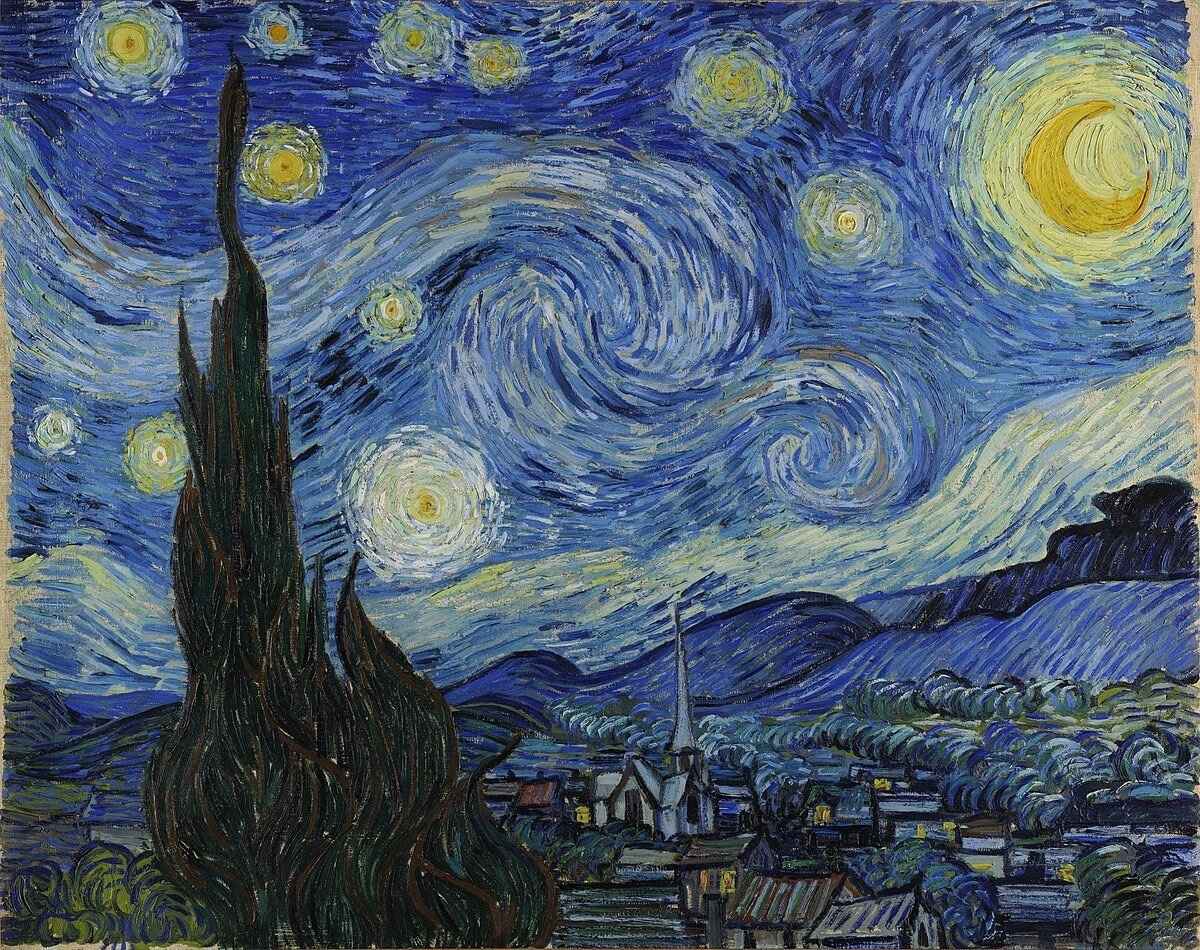
The Starry Night was painted by Vincent van Gogh in June 1889 during his stay at the Saint-Paul-de-Mausole asylum in Saint-Rémy-de-Provence, France. At the time, van Gogh had admitted himself to the asylum after suffering from a severe mental health crisis. Although this famous painting was inspired by the view from his room, he created it from memory and imagination.
The rather abstract painting is a standout work that demonstrates the Dutch master’s creativity when using thick, bold strokes. The blues, yellows, and dreamy swirling atmosphere have fascinated art lovers for decades.
The scene portrayed in The Starry Night is not entirely realistic. The mountains in the distance reflect the landscape near the asylum, but the village in the foreground is imaginary.
Interestingly, scientists have studied the patterns in swirling sky and found they resemble turbulent flow in fluid dynamics. Van Gogh captured a complex natural phenomenon to convey a feeling of dreamlike quality.
Despite the painting’s beauty, van Gogh himself was not entirely pleased with it. In letters to his brother Theo, he expressed mixed feelings, viewing the work as overly abstract and not in line with the realistic style he preferred. He initially considered the painting a failure. We can feel the self-doubt and emotional turmoil he often experienced during his career.
The Scream - Edvard Munch
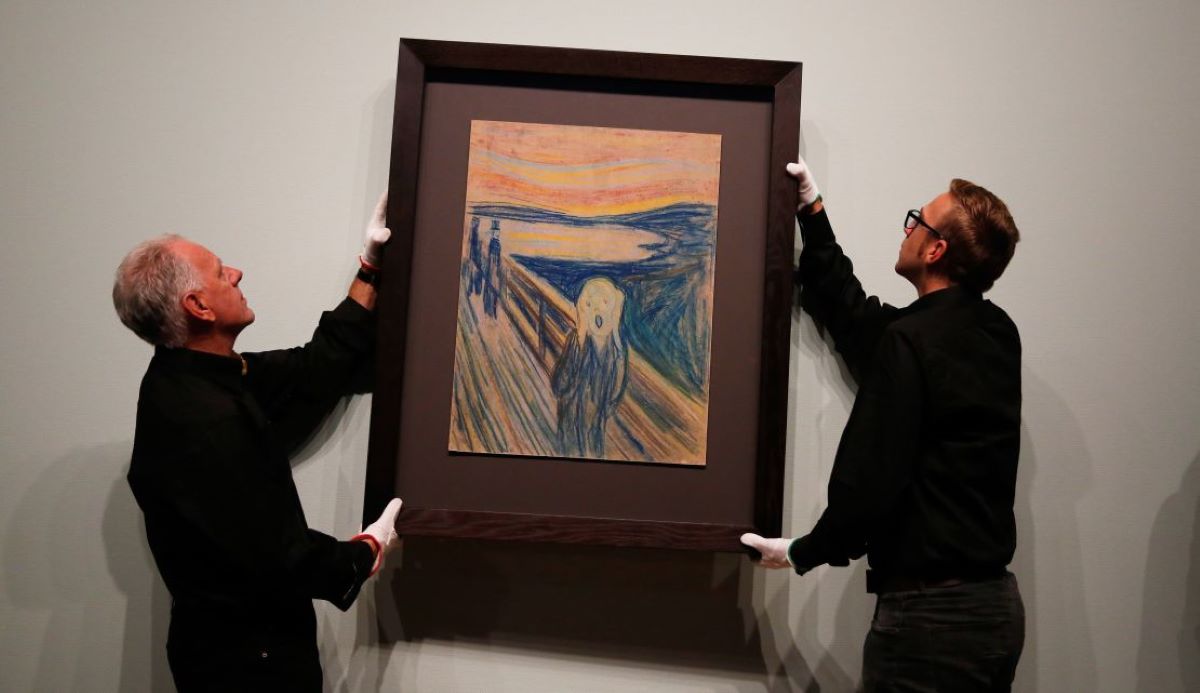
First of all, The Scream is not a single work of art. Munch created multiple versions of The Scream in different mediums. There are four primary versions: two paintings, a pastel, and a lithograph.
The most famous version, housed in the National Gallery of Norway, was painted in 1893. Another version is displayed in the Munch Museum in Oslo, while a pastel version sold for nearly $120 million at auction in 2012, making it one of the most expensive artworks ever sold.
The swirling patterns in the sky, with vibrant red, orange, and yellow hues, create an intense atmosphere. The neither male nor female figure in the Art Nouveau painting is not screaming but is trying to block out the piercing scream of nature. Some interpret the figure as a person, while others suggest it could represent a symbol of universal human fear or even a non-human entity.
Munch explained in his journals that the inspiration for the painting came from a walk he took along a fjord near Oslo. During this walk, he experienced a sense of profound anxiety, feeling as though "the sky turned blood-red" and nature itself was "screaming."
Like the Mona Lisa, the theft of two versions of The Scream (in 1994 and 2004) also contributed to raising public awareness of this work of art. Both were eventually recovered.
Guernica - Pablo Picasso
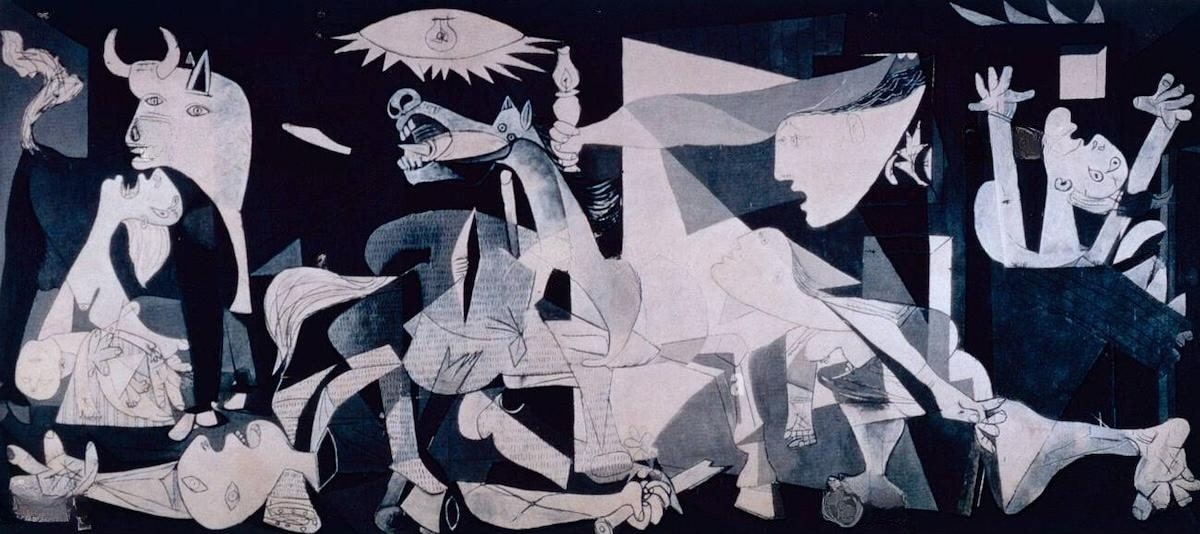
Guernica is the youngest painting in the list of 10 most famous paintings in the world.
The painting depicts the Nazi bombing of the city of Guernica, Basque Country during the Spanish Civil War (1936-1939). The attack, carried out by Nazi Germany’s Luftwaffe in support of Francisco Franco's Nationalist forces, devastated the town, resulting in hundreds of civilian casualties. Picasso was living in Paris at the time and was deeply moved by the news. This is also the sad inspiration for him to create the legendary painting.
The composition features fragmented, distorted figures. A woman holding a dead child, a bull, a wounded horse, and other symbolic elements like a light bulb and a broken sword. These images convey chaos, destruction, agony, portraying the horrors of war, and interpreting how its impact on innocent civilians.
Guernica was taken to the Metropolitan Museum of Modern Art in New York (USA) during World War II for safer storage. Picasso requested that the painting be kept in this museum until democracy returned to Spain. Guernica finally returned to Madrid in 1981, six years after the death of Spanish leader Francisco Franco.
The Kiss - Gustav Klimt
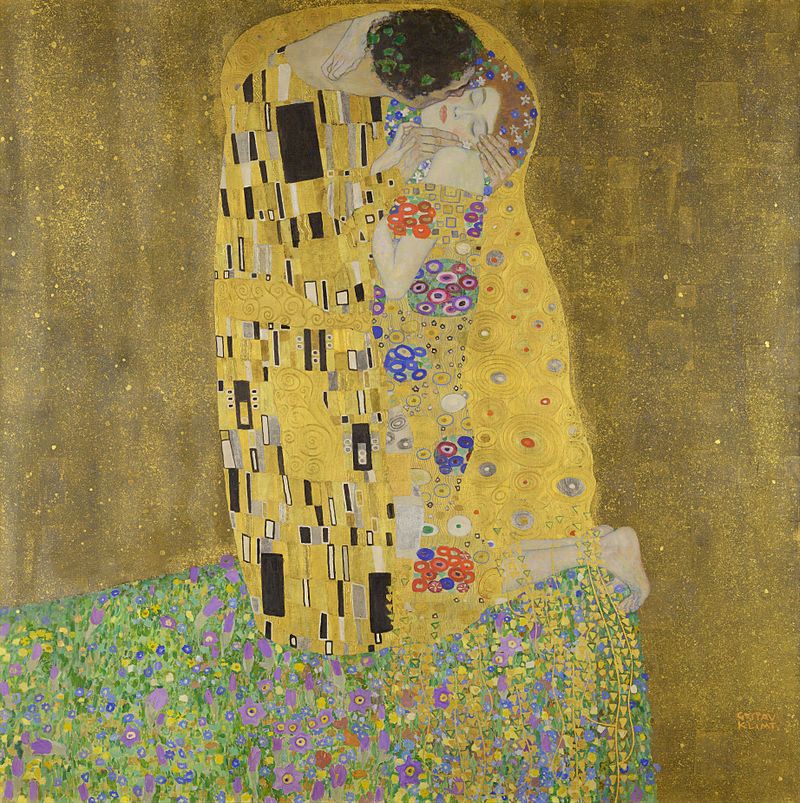
The Kiss is one of the most famous works by Austrian Symbolist painter Gustav Klimt. It represents the pinnacle of his "Golden Period," during which he incorporated gold leaf into his paintings.
The painting depicts a couple locked in an intimate embrace, their bodies entwined in luxurious, flowing robes decorated with intricate patterns. Klimt used gold leaf, silver, and oil paint on canvas, giving the work a shimmering, ethereal quality. The background appears almost abstract, as the figures seem to emerge from a golden, mosaic-like surface.
If we pay attention to every detail, we can see the patterns on the man's robe feature more geometric shapes, while the woman's is adorned with softer, circular motifs. Is this how the artist highlights the contrast between masculine and feminine elements?
The Kiss is widely interpreted as a celebration of love, sensuality, and unity. The painting captures a moment of intense passion and intimacy, yet it also conveys a sense of calm and serenity.
Over the years, The Kiss has become one of the most iconic images of love and passion in Western art. Even over a century after its creation, The Kiss remains a centerpiece in the Belvedere Museum in Vienna, still maintains a celebrated symbol of romantic love.
While The Kiss is not for sale, other works by Klimt are bought and sold for exceptionally high prices. American TV queen Oprah Winfrey sold the painting Portrait of Adele Bloch-Bauer II to a Chinese person for $150 million, earning a profit of $60 million.
Girl with a Pearl Earring - Johannes Vermeer
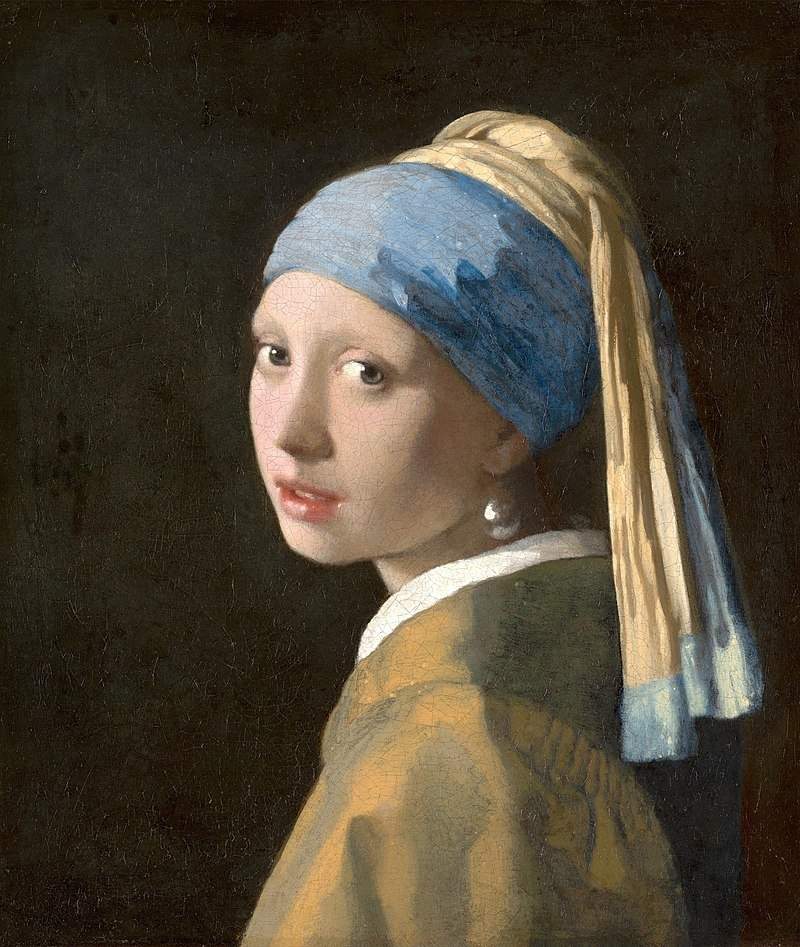
This painting of a girl with captivating eyes is often compared to the Mona Lisa. Aside from the stylistic differences, Girl With a Pearl Earring is not technically a portrait but a “tronie” – a Dutch term for a painting of an imaginary figure with exaggerated features.
This masterpiece stands out for its simplicity. The young girl is the entire center of the painting with only a dark background behind her.
She wears an exotic, blue turban and a large, luminous pearl earring. Vermeer’s use of light is one of the painting’s most striking features, as it softly illuminates her face and brings out the smoothness of her skin, contrasting with the dark background.
The large pearl earring is a focal point of the painting and has been the subject of much analysis. Pearls were often associated with wealth, beauty, and purity during the 17th century. Some interpretations see the earring as a symbol of unattainable luxury, while others suggest it adds a sense of intimacy and allure to the girl's character.
Like many of Vermeer’s works, Girl with a Pearl Earring was relatively unknown for many years after the artist's death. It was rediscovered in the 19th century and gained wider recognition after being acquired by the Mauritshuis Museum in The Hague in 1902. Since then, the painting has become one of the most celebrated artworks in the world, admired for its simplicity, elegance, and mystery.
The Birth of Venus - Sandro Botticelli

This is the oldest work in the Top 10 most famous paintings in the world, competing with The Kiss for sensuality. The Birth of Venus was probably commissioned by a member of the wealthy, art-loving Medici family, who ruled Florence and its surroundings for centuries.
Botticelli, re-interested in ancient Greek culture and fascinated by the Early Renaissance, created an unforgettable painting – the Goddess of Love emerging from a giant clamshell.
The Birth of Venus differs in two ways from most of Botticelli’s contemporaries. First, he painted on canvas rather than wood. Second, nudity was rare during that period; he was bold enough to paint Venus without clothes.
Botticelli uses soft, delicate colors and flowing lines. The figures have an ethereal, almost weightless quality. Botticelli employed a technique that flattened the perspective slightly, giving the scene a more decorative, almost dreamlike appearance. The painting still appears in intricate details, such as the delicate folds of fabric and the gentle curves of Venus's hair. Botticelli is really mastery of form and line to create this masterpiece.
Las Meninas (The Ladies-in-Waiting) - Diego Velázquez
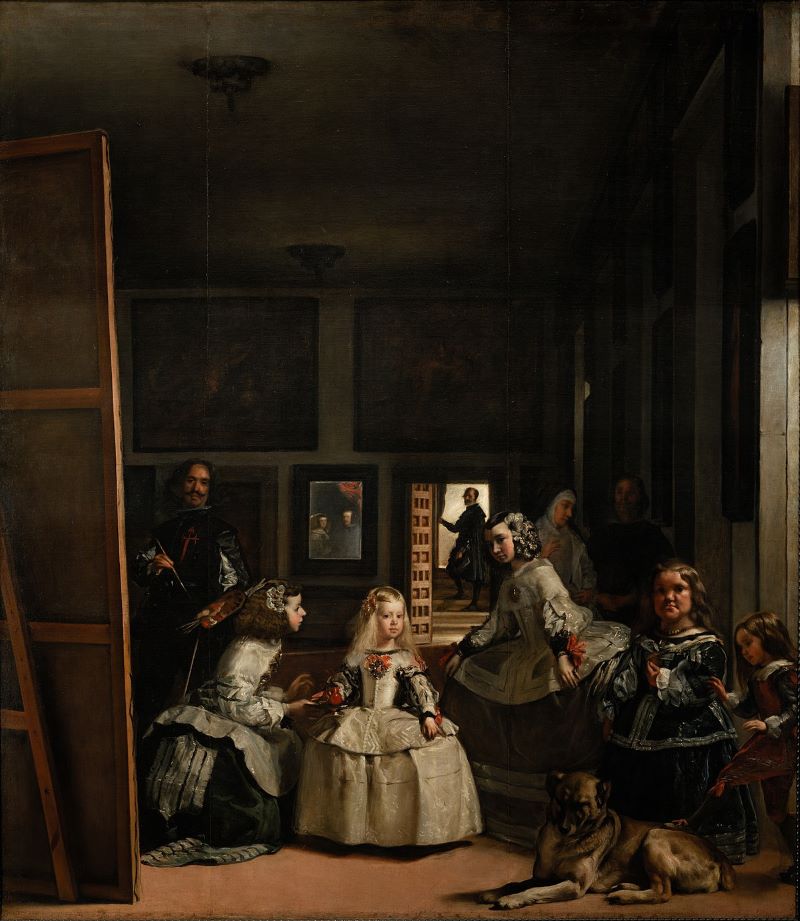
Madrid is the only city that displays 2 of the 10 most famous paintings in the world – Guernica and Las Meninas. Las Meninas is not only Diego Velázquez's most famous painting but also one of his largest, it measures 125 1/4 x 108 5/8 in. (318 x 276 cm).
The complexity of the work has fascinated art critics and the public for centuries. It is a double portrait – a group portrait of the Spanish royal family and a self-portrait of Velázquez (left).
Las Meninas was commissioned by King Philip IV of Spain (reigned 1621-1665). It remained in the royal palace until 1819 when it was transferred to the Prado Museum.
The painting is a scene inside the royal palace. The young Infanta Margarita Teresa is surrounded by her entourage, including her maids of honor (meninas), a dwarf, a dog, a chaperone, and a bodyguard. Velázquez himself is also present, standing behind an easel, seemingly painting the scene. In the background, a mirror reflects the images of King Philip IV and Queen Mariana, they are standing outside the frame, observing the scene.
Velázquez’s inclusion of himself in the painting was a bold statement about his role and status at the Spanish court. As a court painter, Velázquez was not just a servant but a respected and influential figure.
An interesting fact is the red cross on his chest, added later, represents the Order of Santiago - Velázquez received this honor after the painting was completed.
The Creation of Adam - Michelangelo
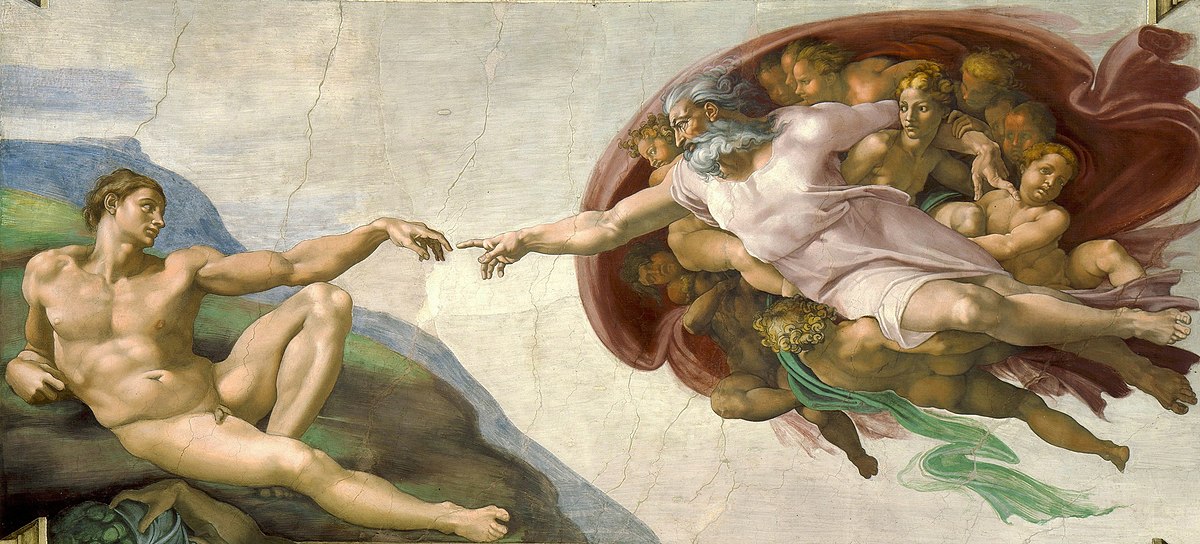
The most famous work of sculptor, painter, architect, poet Michelangelo is depicted on the Sistine Chapel dome, making art lovers look up both literally and figuratively.
The fresco illustrates the biblical moment from the Book of Genesis when God breathes life into Adam, the first human. This is one of the most reproduced and imitated images in history.
In the composition, God is depicted as an elderly, muscular figure, surrounded by angels, reaching out toward Adam, who is lying on the ground, nearly touching God's hand. The outstretched hands of God and Adam, with their fingers almost touching, are iconic symbols of the divine connection between humanity and the Creator. The empty space between their fingertips represents the spark of life that is about to be passed from God to Adam, a moment of profound significance.
The Sistine Chapel dome has faded after centuries of exposure to candle smoke and many other things. After a while, after the cleaning (finished in 1989), one is amazed to see the bright, vivid colors that Michelangelo used to paint the Creation of Adam.
Skilltrans introduces you to explore these related courses. Please click on the course name below to learn more:
Cartoon Drawing For Absolute Beginners
You will learn how to draw cute cartoon characters. Also, you will learn how to draw simple cartoon backgrounds. We’ll start with the basics. For example whats the anatomy of our cute cartoon characters and what shapes we’ll use to draw them. Then we’ll jump into different facial expressions so that you can express emotion with your characters. Also different hairstyles, a lot of practice sheets, and many more.
Character Art School: Complete Coloring and Painting
Whether you want to learn to color and paint characters for games, comics, cartoons, manga, animation and more, this course has you covered. I'm not teaching you a 'method' or a 'way' to color and paint, I'm teaching you to be a fundamentally good character colorist and painter.
Painting in the loose style with watercolors is easily one of my favorite things to do. Learn how to use simple brushstrokes to create six different flowers: lavender, lilac, hibiscus, cherry blossom, calla lily, and magnolias. So get ready to let loose with your brush and apply lots of creative freedom to your paintings.
Conclusion
The 10 famous paintings featured in this article stand as enduring testaments to the creativity, skill, and vision of the artists who brought them to life. Each painting not only reflects the artistic style and context of its time but also carries universal themes that resonate with people even today.
If you want to learn about works of art that have a strong vitality, you can register for Skilltrans courses. We will take you to discover immortal works that have profound meanings that transcend time.

Meet Hoang Duyen, an experienced SEO Specialist with a proven track record in driving organic growth and boosting online visibility. She has honed her skills in keyword research, on-page optimization, and technical SEO. Her expertise lies in crafting data-driven strategies that not only improve search engine rankings but also deliver tangible results for businesses.



